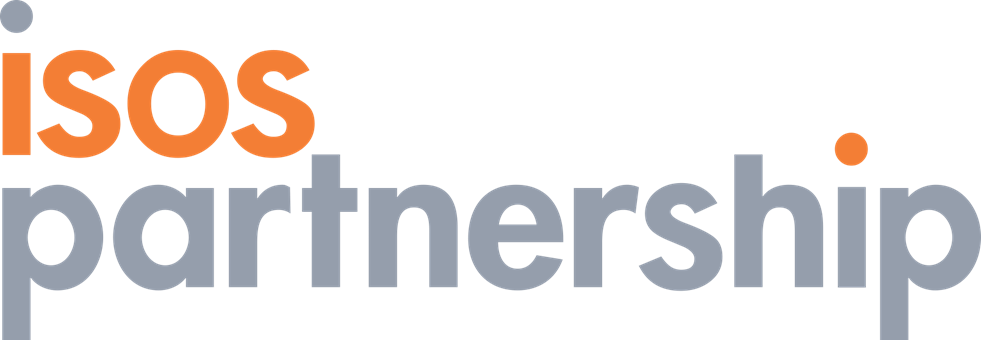Research and evaluation
Research into systems of inclusion and alternative provision in England
‘The enthusiasm and expertise that Isos Partnership demonstrated throughout the project resulted in a report that was extensively praised for its rigour and insight, and that has since contributed significantly to national and local policy development.’
— Thomas Warren, Department for Education
The brief
In 2018, the Government in England announced a new vision for reforming alternative provision (AP). Part of this included building an evidence base about how local systems of support for inclusion and AP operate, and how to improve outcomes for pupils at classroom, institution and local area level. At the time, there was no available evidence that allowed different types of approaches to organising, commissioning and using AP to be compared.
For this reason, a team led by Isos Partnership, and supported by Karina Kulawik (SEN Solutions), Peter Gray (Strategic Support for Children and Young People) and Aliya Saied-Tessier (Alma Economics), were commissioned to undertake a first-of-its-kind research project to gather information about how AP in local areas is organised, the factors that affect demand, and what makes for an effective “local AP system”.
What did we do?
We approached the work in three phases.
Phase one: this involved the initial development and testing of our key research tools, including a survey of local authorities (LAs), through three regional focus groups. The three focus groups were held in Nottingham (hosted by Nottinghamshire County Council), Leeds (hosted by Leeds City Council), and central London in early February 2018, and were attended by representatives from 29 LAs. LAs were invited to the focus groups to ensure the discussions reflected a range of different local AP arrangements – including patterns of provision and ways of organising responsibility for the placement of pupils in AP – as well as contextual characteristics (type of LA, size of pupil population, proportion of pupils eligible for free school meals, rates of permanent exclusion and levels of per-pupil spending on AP).
Phase two: during the second half of the spring term 2018, we ran an online survey that was sent to named AP lead officers in each LA in England. The survey was launched on 20 February and closed at the end of April. During this time, the survey was completed by 118 LAs (out of 152, so a response rate of 78%). The LAs that completed the survey were broadly representative of all 152 LAs in England.
Phase three: in the final phase of the research, we undertook in-depth fieldwork visits to 15 local areas to understand in more detail how their local AP arrangements operated and to explore the key themes from the analysis of the LA survey responses in phase two. We selected a balanced sample of 15 local areas to visit, which reflected a range of models for arranging AP, a range of spend on AP, a range in the reported destinations of pupils after leaving AP, and a range of contextual factors (size of the pupil population, geography, levels of deprivation, and the make-up of the local school system).
What difference did we make?
We collated the qualitative and quantitative evidence that we had gathered in a comprehensive research report, which was published in October 2018. This report was the first comprehensive study of AP arrangements in England. The report provided both an in-depth description of the survey data we had gathered, for example including data on the average number of places commissioned and pupils placed in AP, length of placements in AP and how these differed by pupil age, destinations of pupils placed in AP, and the costs of placements in different types of provision. The report also explored the characteristics of an effective local inclusion and AP system, drawing in both qualitative feedback from our in-depth fieldwork (and illustrated by case studies of effective practice) and statistical analysis that allowed us to show the links between certain characteristics of AP systems and their use of AP and rates of exclusions.
In 2019, working again with Peter Gray, we undertook follow-up research for the DfE into the key factors of local approaches to establishing and maintaining systems of inclusion support and AP based on collective responsibility for pupils placed in, and the use of, AP. The report was completed in March 2020 and, albeit delayed by the coronavirus pandemic, published by the DfE in May 2021.
As well as informing national policy development, we also wanted the research to be useful to local areas, many of whom have been undertaking reviews of their support for inclusion and AP arrangements. As such, for every LA that completed our survey, we produced a data-pack to go alongside the report that set out the key findings from the research, including benchmarking data at regional and local level. We have continued to use this data and the broader findings about the characteristics of effective local AP systems in our work with local education systems, including most recently Wakefield, Wiltshire, Rotherham, Co Durham, North Yorkshire and Newcastle. From the feedback we receive from other local areas, we know that the data we gathered has continued to be used in their work with schools and AP providers when developing their AP and inclusion arrangements.
What did those involved say about the work?
‘This was an ambitious research project aimed at filling a number of key evidence gaps regarding the make-up of the AP sector, the different uses of provision and the effectiveness of local systems. The enthusiasm and expertise that Isos Partnership demonstrated throughout the project – both with regards to the subject area and the different research methodologies – resulted in a report that was extensively praised for its rigour and insight, and that has since contributed significantly to national and local policy development.’
— Thomas Warren, Department for Education

